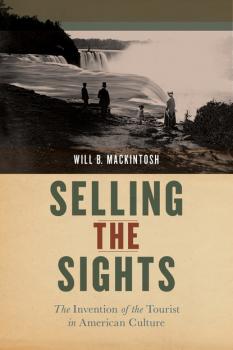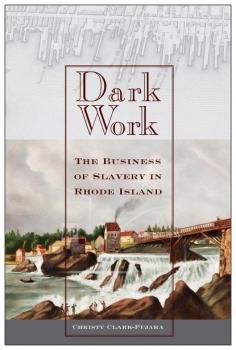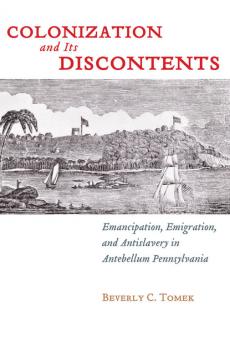ТОП просматриваемых книг сайта:















Early American Places
Скачать книги из серии Early American PlacesАннотация
Uncovers the often overlooked participation of African Americans and Native Americans in early Protestant churches Phillis Wheatley was stolen from her family in Senegambia, and, in 1761, slave traders transported her to Boston, Massachusetts, to be sold. She was purchased by the Wheatley family who treated Phillis far better than most eighteenth-century slaves could hope, and she received a thorough education while still, of course, longing for her freedom. After four years, Wheatley began writing religious poetry. She was baptized and became a member of a predominantly white Congregational church in Boston. More than ten years after her enslavement began, some of her poetry was published in London, England, as a book titled Poems on Various Subjects, Religious and Moral . This book is evidence that her experience of enslavement was exceptional. Wheatley remains the most famous black Christian of the colonial era. Though her experiences and accomplishments were unique, her religious affiliation with a predominantly white church was quite ordinary. Dividing the Faith argues that, contrary to the traditional scholarly consensus, a significant portion of northern Protestants worshipped in interracial contexts during the eighteenth century. Yet in another fifty years, such an affiliation would become increasingly rare as churches were by-and-large segregated.Richard Boles draws from the records of over four hundred congregations to scrutinize the factors that made different Christian traditions either accessible or inaccessible to African American and American Indian peoples. By including Indians, Afro-Indians, and black people in the study of race and religion in the North, this research breaks new ground and uses patterns of church participation to illuminate broader social histories. Overall, it explains the dynamic history of racial integration and segregation in northern colonies and states.
Информация о книге
Автор произведения Richard J. Boles
Жанр Религия: прочее
Серия Early American Places
Аннотация
Stories of witchcraft and demonic possession from early modern England through the last official trials in colonial New England. [/b][b] Those possessed by the devil in early modern England usually exhibited a common set of symptoms: fits, vomiting, visions, contortions, speaking in tongues, and an antipathy to prayer. However, it was a matter of interpretation, and sometimes public opinion, if these symptoms were visited upon the victim, or if they came from within. Both early modern England and colonial New England had cases that blurred the line between witchcraft and demonic possession, most famously, the Salem witch trials. While historians acknowledge some similarities in witch trials between the two regions, such as the fact that an overwhelming majority of witches were women, the histories of these cases primarily focus on local contexts and specifics. In so doing, they overlook the ways in which manhood factored into possession and witchcraft cases. Vexed with Devils is a cultural history of witchcraft-possession phenomena that centers on the role of men and patriarchal power. Erika Gasser reveals that witchcraft trials had as much to do with who had power in the community, to impose judgement or to subvert order, as they did with religious belief. She argues that the gendered dynamics of possession and witchcraft demonstrated that contested meanings of manhood played a critical role in the struggle to maintain authority. While all men were not capable of accessing power in the same ways, many of the people involved—those who acted as if they were possessed, men accused of being witches, and men who wrote possession propaganda—invoked manhood as they struggled to advocate for themselves during these perilous times. Gasser ultimately concludes that the decline of possession and witchcraft cases was not merely a product of change over time, but rather an indication of the ways in which patriarchal power endured throughout and beyond the colonial period. Vexed with Devils reexamines an unnerving time and offers a surprising new perspective on our own, using stories and voices which emerge from the records in ways that continue to fascinate and unsettle us.
Аннотация
A comparative history of cross-cultural encounters and the critical role of cannibalism in the early modernperiod Cannibalism, for medieval and early modern Europeans, was synonymous with savagery. Humans who ate other humans, they believed, were little better than animals. The European colonizers who encountered Native Americans described them as cannibals as a matter of course, and they wrote extensively about the lurid cannibal rituals they claim to have witnessed. In this definitive analysis, Kelly L. Watson argues that the persistent rumors of cannibalism surrounding Native Americans served a specific and practical purpose for European settlers. These colonizers had to forge new identities for themselves in the Americas and find ways to not only subdue but also co-exist with native peoples. They established hierarchical categories of European superiority and Indian inferiority upon which imperial power in the Americas was predicated. In her close read of letters, travel accounts, artistic renderings, and other descriptions of cannibals and cannibalism, Watson focuses on how gender, race, and imperial power intersect within the figure of the cannibal. Watson reads cannibalism as a part of a dominant European binary in which civilization is rendered as male and savagery is seen as female, and she argues that as Europeans came to dominate the New World, they continually rewrote the cannibal narrative to allow for a story in which the savage, effeminate, cannibalistic natives were overwhelmed by the force of virile European masculinity. Original and historically grounded, Insatiable Appetites uses the discourse of cannibalism to uncover the ways in which difference is understood in the West.
Аннотация
Winner, 2020 Mary Kelley Book Prize, given by the Society for Historians of the Early American Republic Winner, 2020 Outstanding Book Award, given by the History of Education Society Uncovers the hidden role of girls and women in the desegregation of American education The story of school desegregation in the United States often begins in the mid-twentieth-century South. Drawing on archival sources and genealogical records, Kabria Baumgartner uncovers the story’s origins in the nineteenth-century Northeast and identifies a previously overlooked group of activists: African American girls and women.In their quest for education, African American girls and women faced numerous obstacles—from threats and harassment to violence. For them, education was a daring undertaking that put them in harm’s way. Yet bold and brave young women such as Sarah Harris, Sarah Parker Remond, Rosetta Morrison, Susan Paul, and Sarah Mapps Douglass persisted. In Pursuit of Knowledge argues that African American girls and women strategized, organized, wrote, and protested for equal school rights—not just for themselves, but for all. Their activism gave rise to a new vision of womanhood: the purposeful woman, who was learned, active, resilient, and forward-thinking. Moreover, these young women set in motion equal-school-rights victories at the local and state level, and laid the groundwork for further action to democratize schools in twentieth-century America. In this thought-provoking book, Baumgartner demonstrates that the confluence of race and gender has shaped the long history of school desegregation in the United States right up to the present.
Информация о книге
Автор произведения Kabria Baumgartner
Жанр Учебная литература
Серия Early American Places
Аннотация
Examines the critical role of urban taverns in the social and political life of colonial and revolutionary America From exclusive “city taverns” to seedy “disorderly houses,” urban taverns were wholly engrained in the diverse web of British American life. By the mid-eighteenth century, urban taverns emerged as the most popular, numerous, and accessible public spaces in British America. These shared spaces, which hosted individuals from a broad swath of socioeconomic backgrounds, eliminated the notion of “civilized” and “wild” individuals, and dismayed the elite colonists who hoped to impose a British-style social order upon their local community. More importantly, urban taverns served as critical arenas through which diverse colonists engaged in an ongoing act of societal negotiation. Inn Civility exhibits how colonists’ struggles to emulate their British homeland ultimately impelled the creation of an American republic. This unique insight demonstrates the messy, often contradictory nature of British American society building. In striving to create a monarchical society based upon tenets of civility, order, and liberty, colonists inadvertently created a political society that the founders would rely upon for their visions of a republican America. The elitist colonists’ futile efforts at realizing a civil society are crucial for understanding America’s controversial beginnings and the fitful development of American republicanism.
Аннотация
A fascinating history of a contested frontier, where struggles over landownership brought Native Americans and English colonists together in surprising ways to preserve Indigenous territory. Properties of Empire shows the dynamic relationship between Native and English systems of property on the turbulent edge of Britain’s empire, and how so many colonists came to believe their prosperity depended on acknowledging Indigenous land rights. As absentee land speculators and hardscrabble colonists squabbled over conflicting visions for the frontier, Wabanaki Indians’ unity allowed them to forcefully project their own interpretations of often poorly remembered old land deeds and treaties. The result was the creation of a system of property in Maine that defied English law, and preserved Native power and territory. Eventually, ordinary colonists, dissident speculators, and grasping officials succeeded in undermining and finally destroying this arrangement, a process that took place in councils and courtrooms, in taverns and treaties, and on battlefields. Properties of Empire challenges assumptions about the relationship between Indigenous and imperial property creation in early America, as well as the fixed nature of Indian “sales” of land, revealing the existence of a prolonged struggle to re-interpret seventeenth-century land transactions and treaties well into the eighteenth century. The ongoing struggle to construct a commonly agreed-upon culture of landownership shaped diplomacy, imperial administration, and matters of colonial law in powerful ways, and its legacy remains with us today.
Аннотация
A fascinating journey through the origins of American tourism In the early nineteenth century, thanks to a booming transportation industry, Americans began to journey away from home simply for the sake of traveling, giving rise to a new cultural phenomenon —the tourist. In Selling the Sights, Will B. Mackintosh describes the origins and cultural significance of this new type of traveler and the moment in time when the emerging American market economy began to reshape the availability of geographical knowledge, the material conditions of travel, and the variety of destinations that sought to profit from visitors with money to spend. Entrepreneurs began to transform the critical steps of travel—deciding where to go and how to get there—into commodities that could be produced in volume and sold to a marketplace of consumers. The identities of Americans prosperous enough to afford such commodities were fundamentally changed as they came to define themselves through the consumption of experiences. Mackintosh ultimately demonstrates that the cultural values and market forces surrounding tourism in the early nineteenth century continue to shape our experience of travel to this day.
Аннотация
Tells the story of one state in particular whose role in the slave trade was outsized: Rhode Island Historians have written expansively about the slave economy and its vital role in early American economic life. Like their northern neighbors, Rhode Islanders bought and sold slaves and supplies that sustained plantations throughout the Americas; however, nowhere else was this business so important. During the colonial period trade with West Indian planters provided Rhode Islanders with molasses, the key ingredient for their number one export: rum. More than 60 percent of all the slave ships that left North America left from Rhode Island. During the antebellum period Rhode Islanders were the leading producers of “negro cloth,” a coarse wool-cotton material made especially for enslaved blacks in the American South. Clark-Pujara draws on the documents of the state, the business, organizational, and personal records of their enslavers, and the few first-hand accounts left by enslaved and free black Rhode Islanders to reconstruct their lived experiences. The business of slavery encouraged slaveholding, slowed emancipation and led to circumscribed black freedom. Enslaved and free black people pushed back against their bondage and the restrictions placed on their freedom. It is convenient, especially for northerners, to think of slavery as southern institution. The erasure or marginalization of the northern black experience and the centrality of the business of slavery to the northern economy allows for a dangerous fiction—that North has no history of racism to overcome. But we cannot afford such a delusion if we are to truly reconcile with our past.
Аннотация
Throughout history the British Atlantic has often been depicted as a series of well-ordered colonial ports that functioned as nodes of Atlantic shipping, where orderliness reflected the effectiveness of the regulatory apparatus constructed to contain Atlantic commerce. Colonial ports were governable places where British vessels, and only British vessels, were to deliver English goods in exchange for colonial produce. Yet behind these sanitized depictions lay another story, one about the porousness of commercial regulation, the informality and persistent illegality of exchanges in the British Empire, and the endurance of a culture of cross-national cooperation in the Atlantic that had been forged in the first decades of European settlement and still resonated a century later.In Empire at the Periphery , Christian J. Koot examines the networks that connected British settlers in New York and the Caribbean and Dutch traders in the Netherlands and in the Dutch colonies in North America and the Caribbean, demonstrating that these interimperial relationships formed a core part of commercial activity in the early Atlantic World, operating alongside British trade. Koot provides unique consideration of how local circumstances shaped imperial development, reminding us that empires consisted not only of elites dictating imperial growth from world capitals, but also of ordinary settlers in far-flung colonial outposts, who often had more in common with—and a greater reliance on—people from foreign empires who shared their experiences of living at the edge of a fragile, transitional world.Part of the series Early American Places
Аннотация
Pennsylvania contained the largest concentration of early America’s abolitionist leaders and organizations, making it a necessary and illustrative stage from which to understand how national conversations about the place of free blacks in early America originated and evolved, and, importantly, the role that colonization—supporting the emigration of free and emancipated blacks to Africa—played in national and international antislavery movements. Beverly C. Tomek’s meticulous exploration of the archives of the American Colonization Society, Pennsylvania’s abolitionist societies, and colonizationist leaders (both black and white) enables her to boldly and innovatively demonstrate that, in Philadelphia at least, the American Colonization Society often worked closely with other antislavery groups to further the goals of the abolitionist movement.In Colonization and Its Discontents , Tomek brings a much-needed examination of the complexity of the colonization movement by describing in depth the difference between those who supported colonization for political and social reasons and those who supported it for religious and humanitarian reasons. Finally, she puts the black perspective on emigration into the broader picture instead of treating black nationalism as an isolated phenomenon and examines its role in influencing the black abolitionist agenda.










